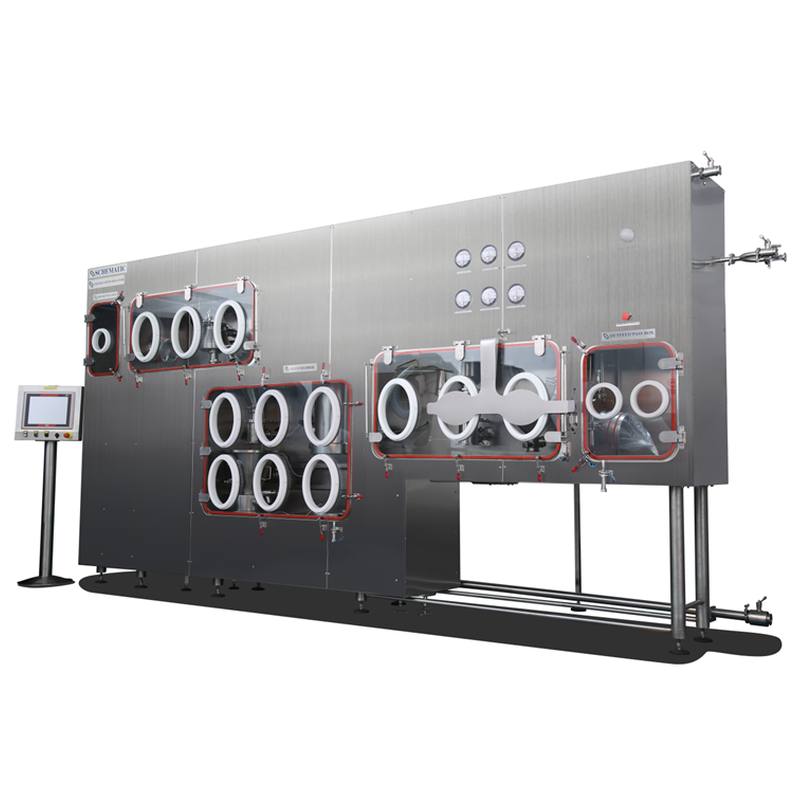

August 9, 2022
Know Your Isolator ABC's
Barrier Isolators are found in many areas of modern chemical and pharmaceutical process plants and are designed to keep operators safe and processed products free from contamination.
Operator Responsibilities and Challenges
From an operator perspective, the design of a barrier isolator loosely falls into one of two categories: working outside the equipment using long-reach gloves (glove boxes) or working inside the equipment in a sealed half suit. The impact of these designs on sustained operator performance can be significant.
Operators working with barrier isolators conduct a wide range duties ranging from mixing, blending and weighing powders to compounding, loading/un-loading dried cake and formulation. This typically involves manual lifting, moving, twisting, pulling, pushing and bending at operator extended hand/arm reach.
Health & safety statistics published by the Health and Safety Executive (HSE) for the Pharmaceutical industry sector show that manual handling and back injuries account for around 70% of the reportable injuries in the sector.
This is significant and it is just the tip of the iceberg, as this does not include the unreported injuries. If we look at the pharmaceutical operations, one type of plant equipment stands out as a prime candidate for causing many of these injuries – Barrier Isolators. Best practice businesses recognise that operator comfort is a prime consideration of equipment design, specifically for all repetitive human processes. Men and women are all built differently; some small, some tall, each with long/short arms and each with different muscle strength capabilities. Given this fact, it is wise to adopt the following ABC approach to barrier isolator supplier selection.
The ABC Approach to Barrier Isolator Selection
Know Your "A"

Firstly always install a bespoke barrier isolator, which is configured to suit your operations and your operators as this will help to ensure maximum production throughput with minimum operator injury or operator discomfort. Off-the-shelf isolators are very unlikely to meet all your operational stakeholder needs. Any purchase cost difference, compared to that of a bespoke isolator, is insignificant when considered over the working life of the isolator and the resulting productivity gains of “getting it right” at the design stage.
Know Your "B"
Secondly, given that some operators working with barrier isolators will be processing hazardous, potent and toxic substances, it is essential that the design of the barrier isolator incorporates built-in safety features such as pneumatic door interlocks, low/high pressure alarms and emergency safety kick-bars/buttons. Look to select a reputable supplier who designs equipment using 3D CAD so that all such aspects of the isolator can easily be visualised and checked by the implementation team at the design stage.
Know Your "C"

Ergonomics is the scientific discipline concerned with the understanding of interactions among humans and other elements of a system. Thirdly, ensure that the isolator supplier gives the operators/ implementation team the opportunity to review a working sized ergo-built isolator. This is an essential element of the isolator design process in order to iron out any potential reach/cleaning issues that were not apparent at the 3D CAD modelling stage. Ergo- Isolator access will further ensure operator comfort and this directly correlates to reduced injury likelihood. Wherever possible, the use of a sealed half-suit is preferable over glove ports as the operator extended reach/lift problem is largely eliminated.
Schematic Engineering Industries, located in the UK and Hyderabad – India, is engaged in design, manufacture, assembly, testing, installation and commissioning of barrier isolators with half-suits and/or glove ports for the chemical and pharmaceutical sectors, specialising in bespoke, client specific designs. The company is a pioneer in good ergonomically designed barrier isolators. Their experienced isolator team applies theory, principles, data and methods to design their isolators to optimise human well-being and overall system performance, designing everything in 3D CAD for maximum visuality. Once the isolator system has been ergonomically and operationally optimised on-screen in conjunction with the client’s inputs, Schematic then creates a life-sized wooden model of the isolator. Once built, they invite the client’s operators to test and sign-off on the systems ergonomics, for variables such as operator reach, system working height, the ability to clean corners (SIP), access doors as well as the ease of maintenance of the unit. This helps clients reduce their operator injuries, reduce work-related absenteeism and ultimately improve the operator health, all of which directly impacts on plant productively.

















